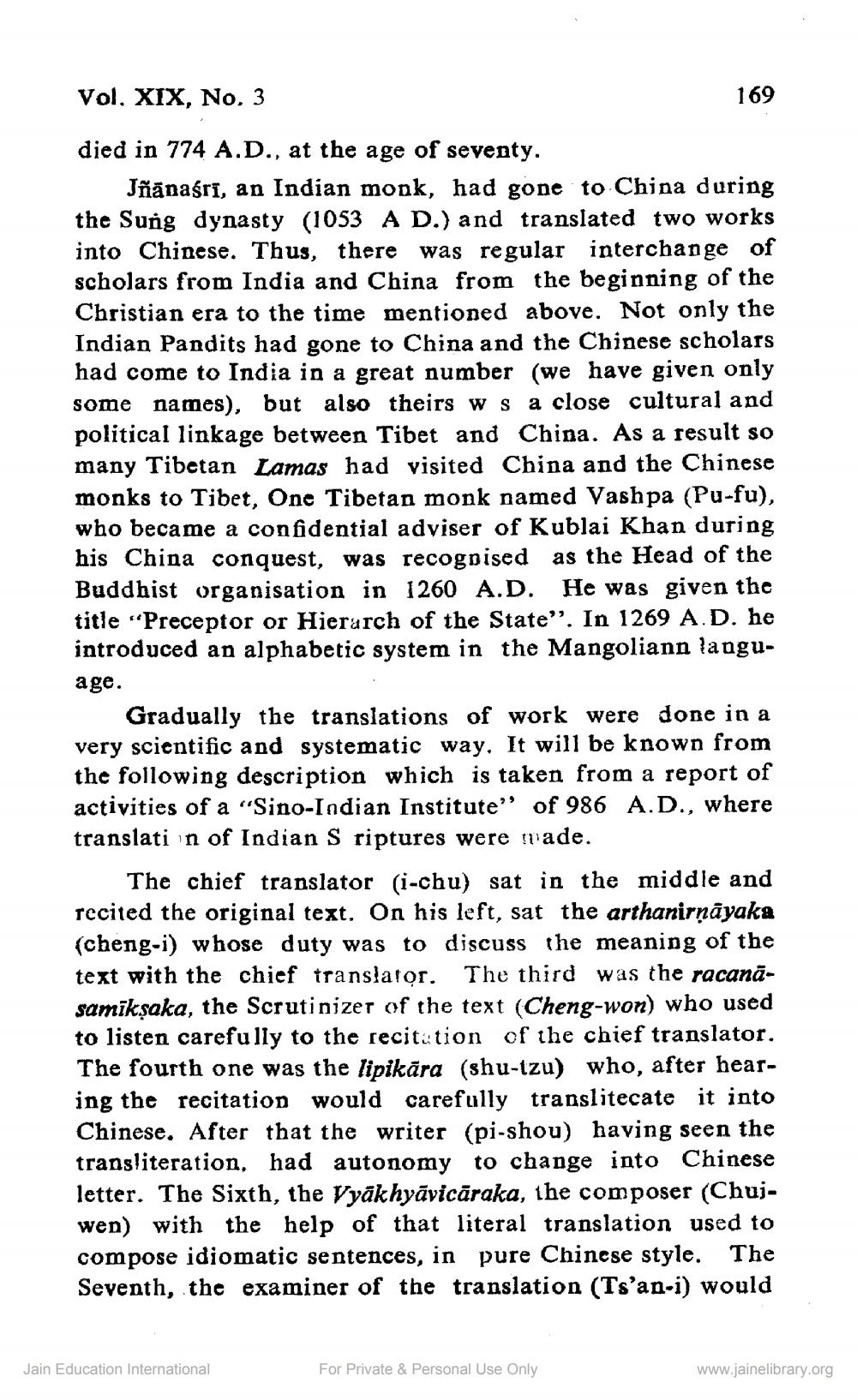________________
Vol. XIX, No. 3
died in 774 A.D., at the age of seventy.
Jñānaśrī, an Indian monk, had gone to China during the Sung dynasty (1053 A D.) and translated two works into Chinese. Thus, there was regular interchange of scholars from India and China from the beginning of the Christian era to the time mentioned above. Not only the Indian Pandits had gone to China and the Chinese scholars had come to India in a great number (we have given only some names), but also theirs w s a close cultural and political linkage between Tibet and China. As a result so many Tibetan Lamas had visited China and the Chinese monks to Tibet, One Tibetan monk named Vashpa (Pu-fu), who became a confidential adviser of Kublai Khan during his China conquest, was recognised as the Head of the Buddhist organisation in 1260 A.D. He was given the title "Preceptor or Hierarch of the State". In 1269 A.D. he introduced an alphabetic system in the Mangoliann language.
169
Gradually the translations of work were done in a very scientific and systematic way. It will be known from the following description which is taken from a report of activities of a "Sino-Indian Institute" of 986 A.D., where translation of Indian S riptures were made.
The chief translator (i-chu) sat in the middle and recited the original text. On his left, sat the arthanirṇāyaka (cheng-i) whose duty was to discuss the meaning of the text with the chief translator. The third was the racanāsamikṣaka, the Scrutinizer of the text (Cheng-won) who used to listen carefully to the recitation of the chief translator. The fourth one was the lipikara (shu-tzu) who, after hearing the recitation would carefully translitecate it into Chinese. After that the writer (pi-shou) having seen the transliteration, had autonomy to change into Chinese letter. The Sixth, the Vyakhyāvicāraka, the composer (Chujwen) with the help of that literal translation used to compose idiomatic sentences, in pure Chinese style. The Seventh, the examiner of the translation (Ts'an-i) would
Jain Education International
For Private & Personal Use Only
www.jainelibrary.org




